The Tire Pressure Monitoring System (TPMS) on your Kia Sportage is designed to warn you when your tire pressure is low. When the system detects a decrease in tire pressure, it will activate the warning light on your dash.
Depending on the model year of the Kia Sportage, the TPMS reset button will be located beneath the steering wheel, or inside the glove box. On some models, the TPMS can be reset through the touchscreen infotainment system instead of using a physical button.
The TPMS is an acronym that stands for Tire Pressure Monitoring System. It’s a feature included in most modern vehicles that use sensors to monitor the air pressure in your tires. If the system detects that one or more of your tires are low on air, it will activate the Low Tire Pressure Warning Light.
It’s important to keep your tires properly inflated because it can improve your fuel efficiency and extend the life of your tires. It’s also a safety measure as underinflated tires can cause blowouts.
Kia Sportage models come with either a direct or indirect TPMS. Direct TPMS uses sensors that are mounted inside the tires to monitor air pressure.
Indirect TPMS uses the vehicle’s anti-lock braking system (ABS) to detect changes in rotational speed. For instance, the Kia Sportage 2008 model has a direct TPMS, while the 2011 model has an indirect TPMS.
Now that you know where the TPMS reset button is on your Kia Sportage, you might be wondering when to reset TPMS. Here are a few scenarios where you might need to reset the system:
Every time you check your tire pressure or inflate your tires, you’ll need to reset the TPMS. This is because the system will still think your tires are low on air and the Low Tire Pressure Warning Light will stay illuminated on your dash.
This is because the system will still think your tires are low on air and the Low Tire Pressure Warning Light will stay illuminated on your dash.
In case you get new tires, you’ll need to reset the system so that it can properly monitor the air pressure in your new tires. The TPMS sensors are specific to each tire, so they can’t be transferred to new tires.
In case you get a flat tire and need to replace it with a spare, you’ll also need to reset the TPMS. You should ensure that the spare tire is properly inflated before you reset the system.
When your Low Tire Pressure Warning Light is coming on frequently or you’re having difficulty resetting the TPMS, you might have a faulty sensor. In this case, you should take your Kia Sportage to a Kia dealer or qualified mechanic for inspection and repairs.
Knowing whether your Kia Sportage has TPMS or not is quite easy. If your car was manufactured after September 2007, then it has TPMS. All Kia Sportage models made after this date come with TPMS as a standard feature.
If your car was manufactured after September 2007, then it has TPMS. All Kia Sportage models made after this date come with TPMS as a standard feature.
There are two ways to check the tire pressure in your Kia Sportage tires. You can either use a tire pressure gauge or check the pressure indicator on the tires themselves. The latter is more accurate but the former is more convenient.
The recommended frequency for checking your tire pressure is once a month. However, you should check it more often if you frequently drive on rough roads or in extreme weather conditions.
It’s also a good idea to check your tire pressure before going on a long road trip. This will help you avoid getting stranded due to a flat tire.
As we already mentioned, some Kia Sportage models don’t have a reset button. The newer models without the TPMS button work with a system that doesn’t need to be reset.
The newer models without the TPMS button work with a system that doesn’t need to be reset.
If your Kia Sportage doesn’t have a TPMS reset button, you can still reset the system by following these steps:
Keep in mind that you’ll need to do this every time you check or inflate your tires.
The United States Congress passed the Tire Pressure Monitoring Systems Act in November 2005. This act requires all passenger vehicles manufactured after September 2007 to come with a TPMS system.
The TPMS system must meet the standards set by the National Highway Traffic Safety Administration (NHTSA). These standards state that the system must be able to detect a 25% drop in tire pressure.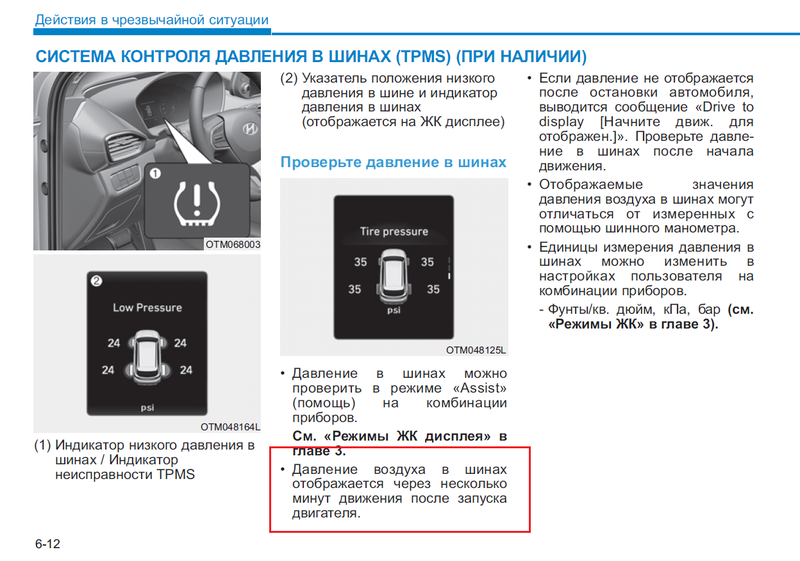
The TPMS system must also have a warning light on the dashboard that comes on when the tire pressure is low. This warning light must be visible to the driver and should not be mistaken for any other warning light.
The TPMS reset button is used to calibrate the system. This is necessary because the system may not be able to accurately detect a drop in tire pressure if the tires are not properly inflated.
Resetting the system is a simple process that can be done in a matter of minutes. All you need to do is press the reset button, which is usually located on the dash.
Once you’ve pressed the button, the system will go through a self-check. After the self-check is complete, the system will be reset and ready to use.
The TPMS system is designed to improve safety on the road. It does this by providing drivers with an early warning of a drop in tire pressure. This allows drivers to take action before the problem becomes serious.
This allows drivers to take action before the problem becomes serious.
The TPMS system can also help improve fuel economy. This is because properly inflated tires are more efficient than underinflated tires.
The TPMS reset button is positioned beneath the steering wheel on the 2008 Kia Sportage. On the 2011 model, the button is on the center console. However, the fourth generation Sportage (2018 and up) does not have a reset button as it works with a system that doesn’t need to be reset.
If your Kia Sportage doesn’t have a TPMS reset button, you can still reset the system by following these steps: first, inflate all your tires to the recommended pressure.
Next, turn on your car and press the brake pedal, now, press and hold the trip odometer reset button for about three seconds, finally, turn off your car and wait for the Low Tire Pressure Warning Light to go off.
For more related Kia topics, here are our other posts:
Kia Sportage Won’t Start: Causes And Fixes
Why Are Kia Cars So Cheap?
What Is The Kia Sedona Towing Capacity?
TPMS stands for Tire Pressure Monitoring System which lets the driver know the air pressure of all four tires through the instrument cluster display.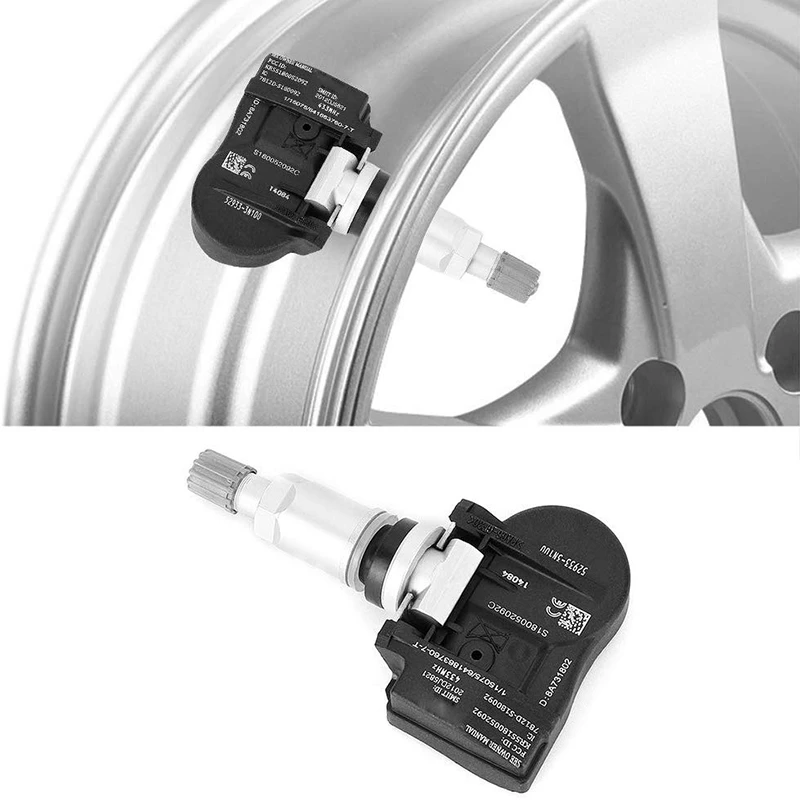 All models of Kia Sportage are equipped with it. A lot of users often tend to have a lot of trouble regarding the location of the TPMS reset button.
All models of Kia Sportage are equipped with it. A lot of users often tend to have a lot of trouble regarding the location of the TPMS reset button.
For Kia Sportage 2008 model cars, the TPMS reset button is located under the steering wheel. For 2011 models, the glove box or under the steering wheel is where the TPMS button is located. Similarly, for 2014 models, the reset button can be found on the right side of the steering wheel. The fourth-generation (2015-2020) of Kia Sportage does not come with a reset button.
Typically, the TPMS reset button is located under the steering wheel but depending on the model of your car, it can be located anywhere from the glove box, the dash to the right of the steering wheel or under it.
This table shall illustrate and make it easier for you to find your Kia’s TPMS reset button.
| Model | Location |
| Kia Telluride | Use the left up/down button on the right side of the wheel. |
| Kia Rio | Check beneath the steering wheel. |
| Kia Optima | Either in the glove box or beneath the steering wheel |
| Kia Niro | On the dash. |
| Kia Forte | The right side of the steering wheel. |
| Kia Seltos | Located under the steering wheel or in the glove box |
| Kia Soul | The right side of the steering wheel. |
| Kia Telluride | The right side of the steering wheel. |
| Kia Stinger | Under the steering wheel. |
Different car models have different locations of the TPMS button but we can provide you with some basic tips which are equivalent to many, if not all models.
Almost 90% of the cars with direct TPMS have the reset button located under the steering wheel through which you can conveniently and easily re-calibrate the sensors.
Some newer cars have the reset button in their menus.
What if I cannot find the TPMS reset button on my Kia Sportage?You’ll usually find the tire pressure monitor reset button beneath the vehicle’s steering wheel. Look around your steering wheel, under it, on the dash or in the glove box. You will find it.
Check your user’s manual if you’re having trouble locating it.
However, if your Kia Sportage model is of fourth-generation (2015-20), there is no TPMS reset button in those models and the warning light will disappear on its own after you fill your tires up.
How to recognise the TPMS indicator?
The TPMS indicator is the light on the dashboard that indicates that your tire pressure may be low and should be checked.
If you’re new to tyre pressure sensors, locating the TPMS indicator on your dashboard is straightforward. It’s a light in the shape of a horseshoe with an exclamation point in the middle.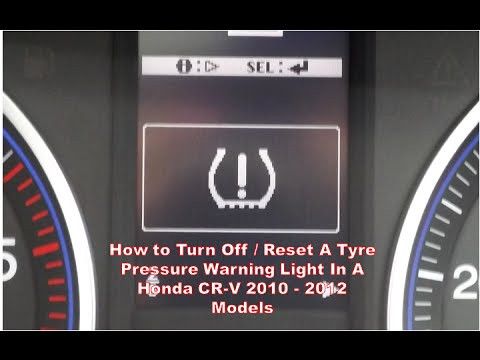
The sensor measures the pressure and temperature in the tyre and sends this information to the tyre pressure monitor ECU (Electronic Control Unit)/receiver, along with the TPMS’s unique ID.
If the ECU logs the TPMS ID, it is compared to the placard pressure, and if the pressure is too high, a warning light illuminates the dash-mounted display.
What is direct and indirect TPMS?
TPMS are of two types; direct and indirect TPMS.
The sensors of the direct TPMS are located on the tire’s valve or the rim. These sensors effectively collect information and send it to the car’s board computer. One disadvantage of the direct TPMS is that it’s very likely to malfunction pertaining to bad weather conditions.
The indirect TPMS has sensors placed on the car’s ABS brakes and/or the speed sensors on each wheel. These sensors measure the wheel rotation speed and identify changes as underinflated tires rotate much faster compared to regularly filled tires.
Direct TPMS is usually found in cars in the United States while indirect TPMS is found mostly in Europe.
Kia Sportage uses direct TPMS.
Can you reset TPMS yourself in Kia?If your tires aren’t filled up, the TPMS light must be on. After filling them up, the pressure light should reset automatically by itself. If it still fails to do so, here’s how to reset tire pressure:
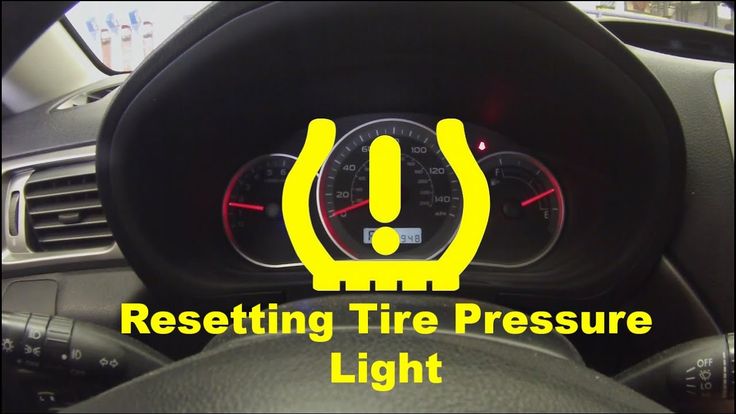 Inflate the tyres to the recommended PSI after they’ve been deflated.
Inflate the tyres to the recommended PSI after they’ve been deflated.Tire Pressure Monitoring Systems are devised to measure and monitor tire pressure in motor vehicles so that accidents can be prevented which are caused by incorrect tire pressure.
Additionally, optimal tire pressure ensures unnecessary tire wear and saves fuel too, so that’s a plus.
What are the legal provisions regarding the TPMS feature?The THREAD (Transportation, Recall Enhancement, Accountability and Documentation) Act requires that a system to warn the driver about underinflated tires to be included in vehicles sold in the U.S. As of September 1, 2007, that warning system, or tire pressure monitoring system (TPMS), had to be placed in 100% of all passenger cars and light trucks (under 10,000 lbs. Gross Vehicle Weight).
Gross Vehicle Weight).
Automakers, and their suppliers, must also notify the National Highway Traffic Safety Administration (NHTSA) of all accidents involving alleged defects.
You are the proud owner of a recent car, the joys of tactile devices, the integrated technologies should bring you a significant usability of your Kia Sportage, however, which is to say that the technology is talking about electronic, and as we all unfortunately know quite often there are problems to solve. Today we will look at the tire pressure sensor and exactly how to reset the tire pressure sensor on the Kia Sportage so that this indicator never appears on the dashboard again. nine0004 To do this, we will divide our article into two parts: first, we will explain the general circumstances when the tire pressure indicator appears and the method to follow, and then the circumstances when the tire pressure indicator remains on despite the tires being inflated, so how to reset this tire sensor on Kia Sportage.
First, we will focus on the general method of resetting the tire sensor on the Kia Sportage, which if it lights up, here are the main basic steps:
 nine0004 . If this is not the case, we advise you to study the next section.
nine0004 . If this is not the case, we advise you to study the next section. Now that you have followed the normal method of removing the tire pressure sensor on a Kia Sportage, and it didn't work, we'll move on to the second solution, which is, the tires on my Kia Sportage are well inflated and I still want that light to go out. It probably shows that you have Faulty tire pressure sensor. This will require to reset the value on your car's dashboard. However, be careful not to do this while driving as pressure fluctuations will interfere with the pressure sensors. Typically, you need to go through the car's settings, then you should find an option to diagnose inflation or "deflate detection". While on this tab, you must hold the select button or reset button according to the year of your Kia Sportage.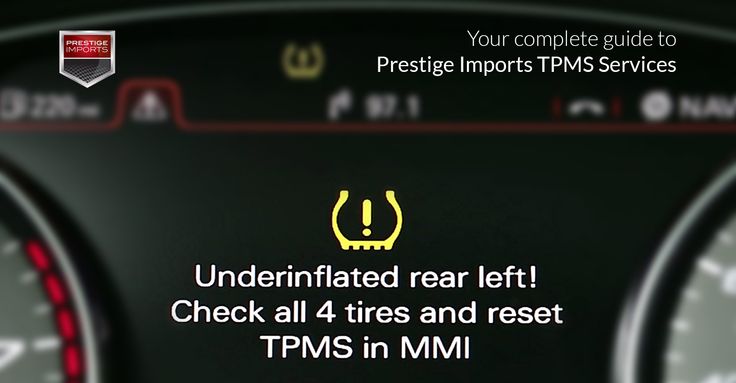 until you see a message from the car console confirming that the reset has been taken into account (this usually takes a few seconds). You can now turn off the ignition and restart your Kia Sportage to see if the tire pressure indicator has gone out. nine0005
until you see a message from the car console confirming that the reset has been taken into account (this usually takes a few seconds). You can now turn off the ignition and restart your Kia Sportage to see if the tire pressure indicator has gone out. nine0005
If you want more Kia Sportage manuals, go to our Kia Sportage category.
Save article:
The article says:
When the tires are optimally inflated, the low tire pressure indicator (TPMS) does not light up on the vehicle's dashboard. However, in some cases, it lights up even if the pressure is normal. This can't help but be annoying, especially when the tires are inflated normally. In our article today, we will figure out how to reset a tire pressure error.
American and European scientists conducted a study, during which it was found that most drivers do not check whether the wheels are properly inflated before getting behind the wheel of a car. Only 40% of car owners perform such a check - and even then only once every 12 months. This is the reason for a large number of accidents. nine0005
This is the reason for a large number of accidents. nine0005
The TPMS (Tyre pressure monitoring system) system is designed to monitor tire pressure, as well as warn of a malfunction. If the tires are under-inflated or over-inflated, an error will be displayed on the remote control or an audible signal will appear.
What is dangerous too high or, conversely, low pressure? The risk of an accident increases, the car begins to consume more fuel, in addition, the rubber wears out faster.
Photo: Shutterstock nine0005
The above devices operate on the same principle. Let's figure out how information about what tire pressure gets to the control panel.
 Otherwise, when the tires should be lowered a little, the program sends a signal to the car owner. Exactly according to the same principle, a signal is transmitted if the rubber needs to be pumped up.
Otherwise, when the tires should be lowered a little, the program sends a signal to the car owner. Exactly according to the same principle, a signal is transmitted if the rubber needs to be pumped up. Consider how pressure is calculated by measuring instruments. Typically, the sensor performs a comparison of the angular rotation of the wheel. Knowing the value of this parameter, you can calculate the distance that the wheel will travel in one rotation.
Obviously, if the tires are under-inflated or over-inflated, then the outer diameter of the wheel will be different. Visually, a person cannot determine this change. But the sensor notices even such changes. The system fixes non-compliance with the required parameters. nine0005
The system fixes non-compliance with the required parameters. nine0005
The sensor will still respond, despite the fact that the wheel circumference has changed quite a bit. In this situation, it is necessary to find out what mechanical reason led to this. Only in this way can you eliminate the misinterpretation of the signals transmitted by the system. This can happen because:
Also, the TPMS system gives an error when you install new wheels or rearrange them.
When, after these steps, a tire pressure error appeared, indicating unbalance, you should reset the settings, and then set the basic parameters. In this case, the control signal may remain even if the basic settings have been selected.
Why such problems may occur:
nine0002 See also
"Velcro or spikes: which rubber is better for the Russian winter"
Read more
How to reset tire pressure error? To begin with, imagine that the TPMS system is working properly and the blinking light indicates a problem with the undercarriage of the machine.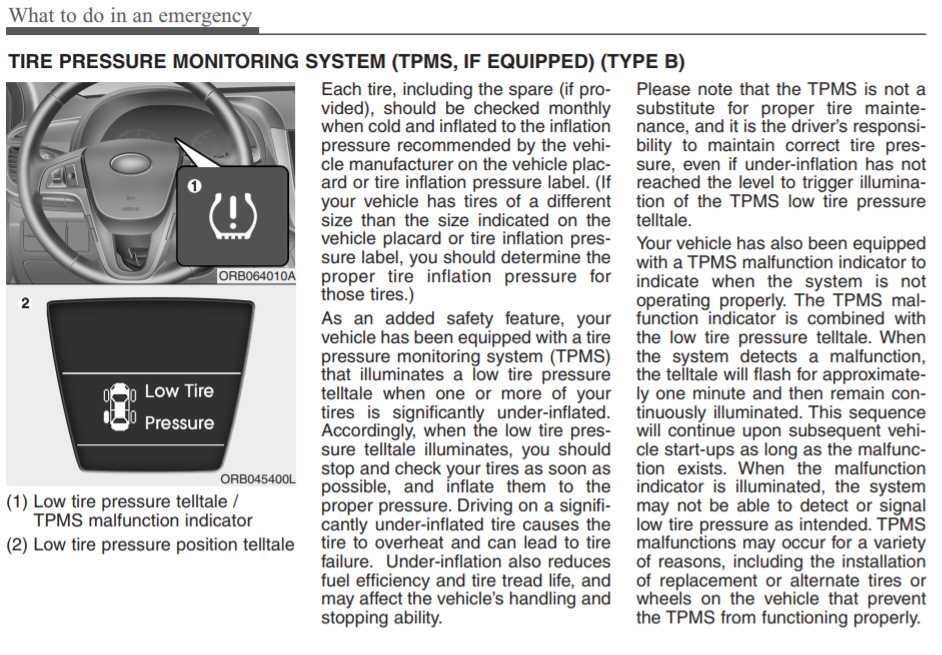 The first thing you should do is slowly release the gas. You can not brake sharply, turn the steering wheel. After the car has stopped, inspect the tires to make sure the rubber is not punctured or broken. Then you can check if the tire pressure is normal. nine0005
The first thing you should do is slowly release the gas. You can not brake sharply, turn the steering wheel. After the car has stopped, inspect the tires to make sure the rubber is not punctured or broken. Then you can check if the tire pressure is normal. nine0005
Pay attention! The TPMS will not always show a tire pressure error. For example, if the tires are slowly deflating, the system will not inform you about the problem. In the same way, she will not notice the error if the tire pressure starts to drop rapidly. This usually happens when a tire ruptures. This feature of the TPMS system is explained by the specifics of identifying and counting nonconformities.
However, in some cases, it happens that the TPMS system indicator is on, but the tires are in perfect condition. How to reset tire pressure error? We understand. nine0005
The complex TPMS system in some cases starts to work incorrectly. Usually, car owners observe the following picture: a tire pressure error is displayed on the display (the tire is underinflated), but in reality everything is fine with the wheel. You have to reset the tire pressure error. Otherwise, the TPMS system starts to work incorrectly.
Usually, car owners observe the following picture: a tire pressure error is displayed on the display (the tire is underinflated), but in reality everything is fine with the wheel. You have to reset the tire pressure error. Otherwise, the TPMS system starts to work incorrectly.
Photo: Shutterstock nine0005
You also have to reset the tire pressure error when there is radio interference from high voltage power lines. Or when sources of radio signals are located in the immediate vicinity. But as soon as you move away from them, the pressure error disappears and the system begins to function properly.
The reason for the malfunction may lie in the sensor, which is "failed". This damage cannot be easily repaired. How to reset a tire pressure error if the sensor flashes, while you hear a beep, lose your vigilance and find it difficult to drive a car? There are 4 ways to fix this problem. nine0005
To reset the error, pick up a speed of 80 km / h and continue driving for another 15 kilometers.
This method is the easiest to implement. If your car has this feature, then turn on the cruise control so that the speed does not change. Depending on the model of your car, you will be able to reset the tire pressure error at a speed that exceeds the specified one. After you cover a distance of 15-20 kilometers, maintaining the same speed of 80 km / h, make a stop. Turn off the motor. When you start it again, the tire pressure error will disappear. nine0005
Popular articles
How to choose a subwoofer for your car
19.12.2022
427
From top to bottom, obliquely: how to degrease a car body before painting
12/15/2022
300 nine0005
Chic, shine, beauty: how to remove scratches on a car with your own hands
9.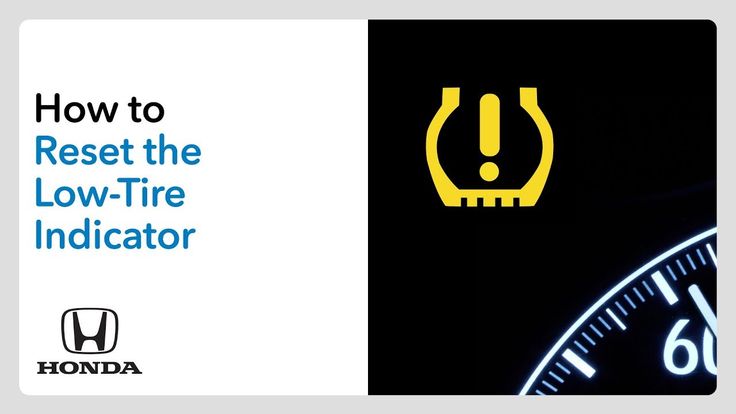 12.2022
12.2022
379
Without damage: how to reduce the fuel consumption of your car
11/29/2022
292
nine0054 How much do they pay for advertising on a car11/25/2022
2233
Press the tire pressure monitoring system (TPMS) reset button on your car and you will be able to reset the error.
It does not matter what type of low pressure warning system is used. In any case, there will be a sensor on each wheel of your car. Sometimes it may be necessary to reboot the touch system of the car. Read the owner's manual for the vehicle. It contains information on how to reset a tire pressure error. Most often, the instructions indicate which button to press to reset. nine0005
It contains information on how to reset a tire pressure error. Most often, the instructions indicate which button to press to reset. nine0005
The ignition key must be in the lock. No need to start the car, just turn it to the “on” (“ON”) position. Then press and hold the reset button, which may be under the steering wheel. We are waiting for the low pressure indicator to flash 3 times. After that, you can release the button. We start the car, it should work for 20 minutes. After this time, the computer will calibrate the sensors on the wheels. Now you can turn off the car.
nine0002 See also
""
Read more
Lower and then re-inflate the wheels.
Failed to reset tire pressure error using the previous method? Then we inflate all tires to 0.2 bar, this is the pressure that should be according to the recommendations of car manufacturers. Did the error go away? Then we lower the pressure in the tires completely.
Did the error go away? Then we lower the pressure in the tires completely.
Now we pump up the wheels again. The pressure in them should be the same as indicated on the driver's door pillar or in the car's operating instructions. When there are sensors on the wheels, you need to remember about the spare tire. Now you need to drive about 3-5 kilometers, adhering to a speed of 25 km per hour. So you can reset the tire pressure error. nine0005
Remove the battery terminals and then connect it to reset the error.
Each car has a computer that receives data from all kinds of vehicle sensors, including TPMS system sensors. However, any electronics can fail. To reset the error, you will have to reboot the system, for which you need to turn off the power.
Photo: Shutterstock
To do this, open the hood. The battery is located under the hood. Disconnect the negative terminal from it. To perform this operation, use a wrench. Then sit in the driver's seat, turn the key to the "ON" position, but do not start the car. Now you need to press the signal for 3 seconds. This will use up the energy that remains in the electrical system of the machine. Then reconnect the battery. This way you can reset the error. nine0005
Now you need to press the signal for 3 seconds. This will use up the energy that remains in the electrical system of the machine. Then reconnect the battery. This way you can reset the error. nine0005
Sensors keep track of tire pressure. However, you need to be sure that they function properly. Of course, you do not need to constantly walk around with a special measuring device and find out the status of the sensors. It just needs to be calibrated from time to time.
It is performed quite simply. The most important thing to remember is that, depending on the make and model of your car, for each wheel there are pressure parameters strictly defined by the manufacturer for winter and summer. These values should be given to the sensors. How the installation and configuration will be performed depends on the controller used. nine0005
 Nothing else needs to be configured.
Nothing else needs to be configured. 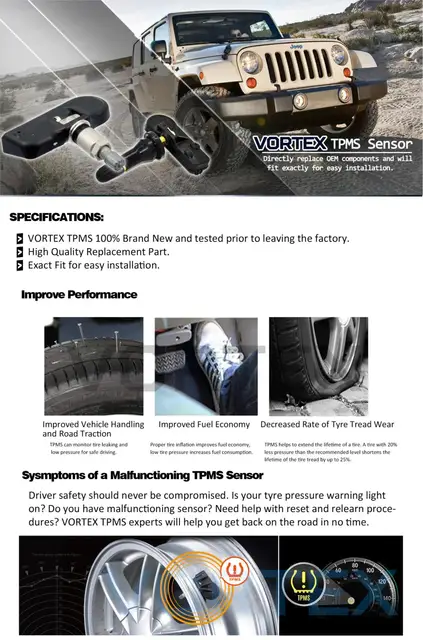
For current promotions on the Halva card, which will help you profitably purchase household appliances, you can follow here. nine0005
To prevent a tire pressure error from appearing, it is important to calibrate (adjust the TPMS system) every time a change is made. For example, when you installed a new set of wheels, repaired tires, did balancing, and the like. Using TPMS controllers is quite simple. The main thing is to read the instructions for use of the device. And make sure that the tire pressure is the one recommended by the car manufacturer.
nine0002 See also
"What tires can be put on rims 14, 15 and 16: advice from professionals"
Read more
Every car owner gets annoyed if the tire pressure error icon lights up on the dashboard. This indicator informs you that something is wrong with the wheels.